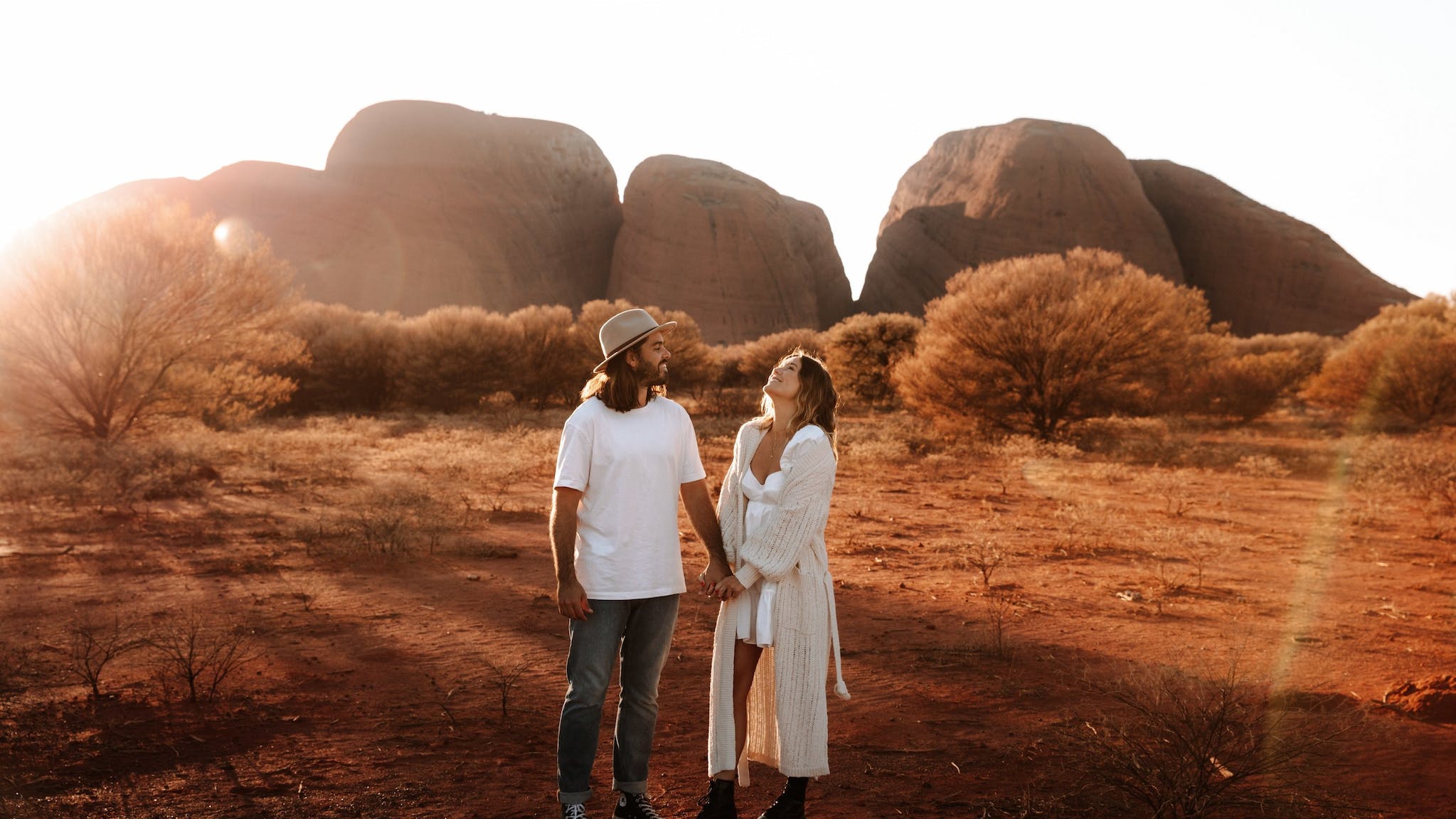Das Rote Zentrum Australiens ist die Heimat des Naturwunders und Kulturdenkmals Kata Tjuta (die Olgas).
Wandern Sie um die hoch aufragenden Felskuppeln, die bei Sonnenaufgang und Sonnenuntergang leuchten. Die ockerfarbenen Formen liegen etwa 40 km westlich von Uluru und sind ein faszinierender und faszinierender Anblick.
Wählen Sie aus einer Reihe von Wanderwegen, die von leichten Spaziergängen bis hin zu längeren, schwierigeren Strecken reichen. Am Ende des kurzen Spaziergangs zum Aussichtsbereich der Kata Tjuta-Dünen können Sie sich hinsetzen und den herrlichen Panoramablick auf die Kuppeln genießen.
Der Walpa Gorge Walk ist ein felsiger Pfad, der sanft ansteigt, an seltenen Pflanzen vorbeiführt und zu einem Speerholzhain führt. Der längste aller Wanderwege bei Kata Tjuta ist der Valley of the Winds Walk – ein mittelschwerer Weg mit atemberaubenden Aussichten. Er ist stellenweise sehr steil, aber der 7,4 km lange Rundweg ist die Mühe wert – er führt Sie zwischen den Kuppeln hindurch, durch Bachbetten und weg von den Menschenmassen.
Kata Tjuta bedeutet „viele Köpfe“ und ist für die einheimischen Anangu-Aborigines, die das Gebiet seit mehr als 22.000 Jahren bewohnen, heilig. Es bildet einen wichtigen Mittelpunkt ihres spirituellen Lebens. Als Besucher können Sie an einer Kulturtour teilnehmen, um etwas über die heilige Geschichte und Traumzeitgeschichten der Region zu erfahren.
Eintrittspreise
Freier Eintritt
Einrichtungen
- Barbeque
- Cafe
- Parkplatz
- Parkplatz für Reisebusse
- Interpretive Center
- Interactive-Center
- Picknick Bereich
- Öffentliche Toilette













.jpg?width=246&height=164&fit=crop&format=jpg&auto=webp)







